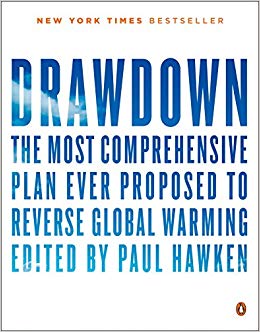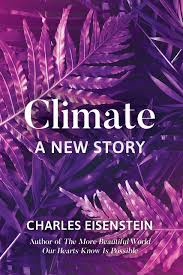
Even though greenhouse gas reduction was ranked 4th in Charles Eisenstein’s living earth model that I wrote about in Part 1 of My Climate Story, I’m “going there” next because it is easy to measure and I had previously fallen in love with Paul Hawken’s very optimistic model, Project Drawdown, which I learned about in 2017 through my work with the Pachamama Alliance.
From Drawdown.org’s website:
Project Drawdown is a nonprofit organization and coalition of scholars, scientists, entrepreneurs, and advocates from across the globe that is mapping, measuring, modeling, and communicating about a collective array of substantive solutions to global warming, with the goal of reaching drawdown.
Drawdown is the point in time when the concentration of greenhouse gases in the Earth’s atmosphere begins to decline on a year-to-year basis. Project Drawdown has developed realistic, solution-specific models, technical assessments, and policy memos projecting the financial and climate impacts of existing solutions deployed at scale over the next thirty years.
All of the solutions need to be adopted by as many people as possible as soon as possible, so why not choose one (or 10) right now? One thing I thought would be really great was if someone figured out a way to aggregate individual actions so we could “see” impact more easily. Drawdown is sponsoring an ecochallenge right now that lets teams do exactly that. I formed a team locally called Climate Action NWI. Click <<here>> to join us or for a team for your own group.
When I read Charles Eisenstein’s Climate: A New Story in 2019 it threw me (and several others I know) into a tizzy as we struggled to figure out why we couldn’t simply cling to that model? I credit my friend Josh Wolf from Pachamama Alliance for helping me to reconcile my struggle with two of my favorite books in recent times, Project Drawdown by Paul Hawken and Climate: A New Story. He said, “Drawdown is necessary but not sufficient.” For whatever reason, that simple statement helped me organize my thoughts better and reconcile why I could still love both models. More on this in Part 3.






